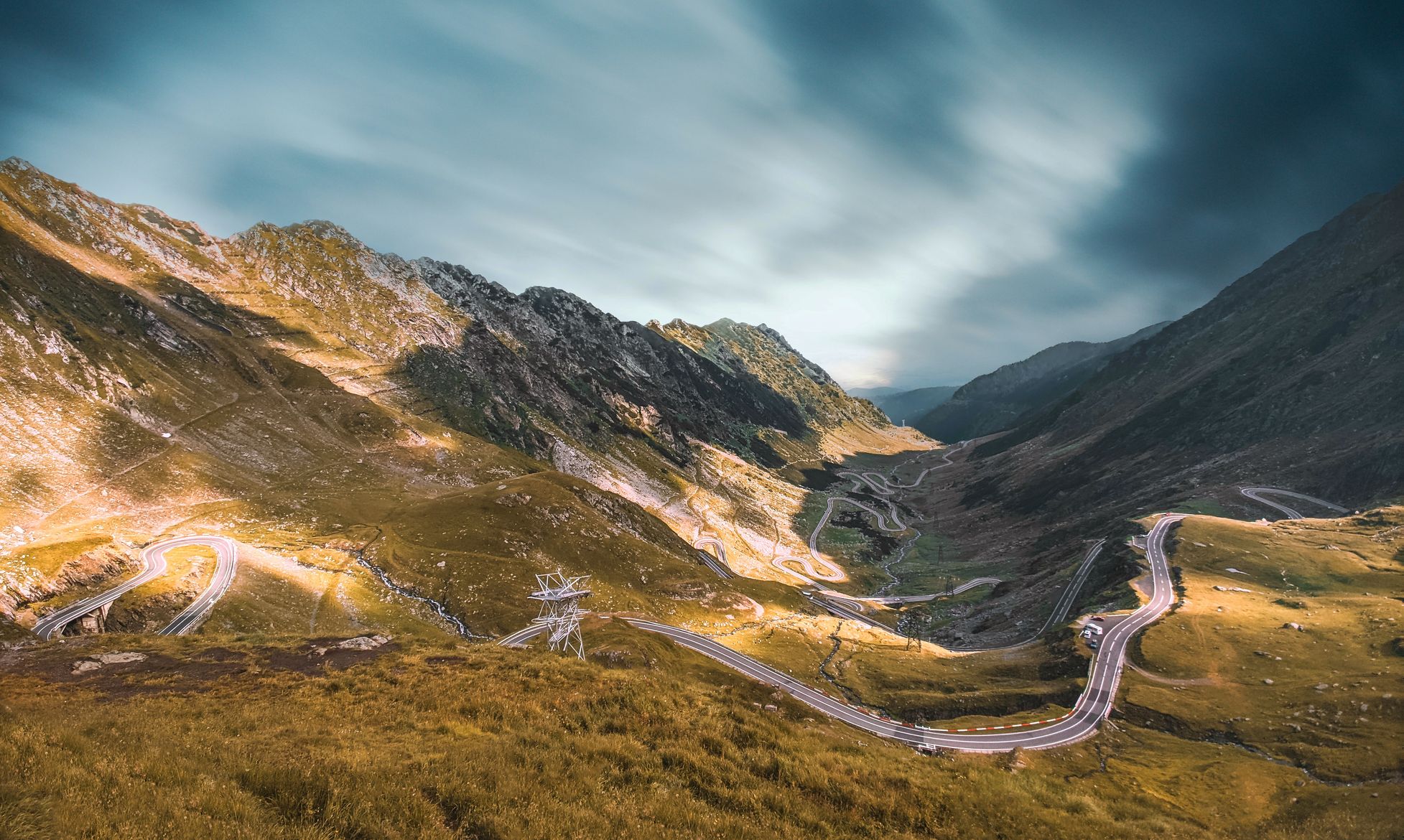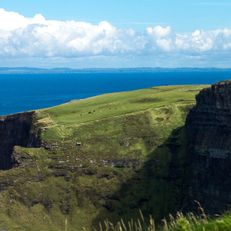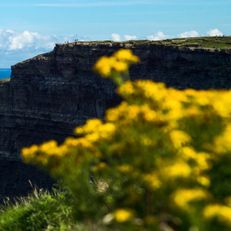Romania Traffic Guide
Discover Romania by car
Romania is known for its vast national parks and fairy-tale castles, which are sometimes far apart. However, public transport beyond the cities is not very well developed, making a car essential for extensive exploration tours.
Learn in this guide which traffic rules you should pay attention to in Romania. Additionally, get to know the road conditions and the fuel situation in the country better.
Overview of Traffic Rules in Romania
- To drive in Romania, you must be at least 18 years old and have a valid driver's license. For travelers from Germany, the EU driver's license is sufficient.
- In Romania, you drive on the right-hand side of the road.
- The speed limit within built-up areas is 50 km/h. Outside built-up areas, the maximum speed limit in Romania is 90 km/h. On expressways, the speed limit is 100 km/h. On motorways, speed limits of up to 130 km/h are common.
- For novice drivers, who have had their license for less than a year, the speed limits outside built-up areas, on expressways, and on motorways are 20 km/h lower.
- In Romania, you and all passengers must wear seat belts while driving.
- You may only use your mobile phone and other devices while driving if you have a hands-free system, without holding it in your hand.
- Drivers are required to use headlights on motorways and outside built-up areas during the day. Motorcycle riders must also ride with lights on at all times within built-up areas.
- Mandatory equipment in the car includes a warning triangle and first aid kit. A reflective vest must be carried for vehicles weighing over 3.5 tons but is also recommended for lighter vehicles. It must be worn when leaving the vehicle outside built-up areas in case of an accident, breakdown, or other incidents.
- The blood alcohol content limit is 0.0. Therefore, there is an absolute ban on alcohol for drivers. Non-compliance may result in license suspension at the discretion of the police officer.
- Traffic lights do not have a yellow phase between red and green. Instead, the change is often indicated by a second counter.
- Overtaking is generally prohibited on bridges in Romania.
- In the event of accidents, the police must be notified immediately, even if only property damage has occurred.
- Vehicles with visible damage may only leave the country with a police damage confirmation.
- If your vehicle already has damage upon entry, you should declare and document these damages at the border crossing.
Driving in Romania
The roads in Romania
The road network in Romania is currently undergoing significant expansion. Between the major cities, there are already well-developed roads. Moreover, an increasing number of motorways are being added, most of which are in excellent condition. Even within urban areas, you can generally expect a decent state of the roads.

Outside urban areas, the road conditions in Romania can be quite varied. Alongside paved roads with concrete and tarmac surfaces, unpaved gravel tracks of fluctuating quality are not uncommon. Concrete and tarmac roads can be in excellent condition in places, while in other sections they may have potholes, bumps, or other defects. Therefore, always be prepared for obstacles, unevenness, and changing conditions.
You should also watch out for other road users. In rural areas, you may encounter vehicles that are not or are poorly illuminated.
Moreover, traffic in Romania is somewhat more hectic than in Germany. Other drivers may tailgate, overtake incorrectly, or exceed the speed limit. Therefore, pay extra attention to the traffic and drive carefully.
Petrol stations and charging stations
Petrol and diesel: Petrol stations for petrol and diesel are sufficiently available in most regions of Romania.

On main roads, in cities, and on motorways, you can usually refuel at any time of the day. Rural petrol stations often stay open until 9 pm. The prices for petrol and diesel in Romania are about the European average or slightly below.
Electric cars: The coverage of charging stations for electric cars is mostly adequate in Romania. In the cities, you will already find several charging options for your electric car. In rural areas, the charging situation is still significantly less favorable.
Hydrogen cars: There are currently no hydrogen filling stations available in Romania. Therefore, you should not travel to Romania with a hydrogen car.
Rental car or own car?
You can comfortably reach Romania from Central Europe by your own car via land without having to leave the EU. With a vehicle registered in Germany, you theoretically only need the vehicle documents for entry. However, it is generally recommended to carry the International Insurance Card when traveling abroad. Moreover, you should have noticeable damages to your vehicle documented upon entry to avoid problems when exiting.
Rental cars are also not only plentiful in Romania but usually available at reasonable prices. With some providers, you can rent a car from the age of 18. However, it's important to note that most rental companies require at least one year of driving experience. Additionally, young driver fees may apply, which are common until the age of 25.
Fines
Fines for traffic offenses can be imposed on the spot by the police. For particularly serious violations of the regulations, the police can also directly confiscate the driver's license and impose a driving ban. Those who pay the fine within two working days can achieve a 50% reduction. Make sure that you are issued a receipt after payment.

Excerpt from the fine catalog:
- Speeding (20 km/h over the limit): from 60 euros (approx. £50)
- Speeding (50 km/h over the limit): from 265 euros (approx. £230)
- Seat belt violation: from 60 euros (approx. £50)
- Illegal parking: up to 175 euros (approx. £150)
- Drunk driving: from 265 euros (approx. £230)
- Running a red light: from 175 euros (approx. £150)
- Using a mobile phone while driving: from 115 euros (approx. £100)
Conclusion: Notorious road conditions in Romania
Taking into account the mixed road conditions and the unfamiliar driving style of Romanian drivers, you can make good progress in Romania by car. The best options are your own car or a rental car with an internal combustion engine. However, a holiday in Romania with an electric car is also possible with the right planning and some restrictions.
► Here, you can find more information about the toll regulations in Romania to be optimally prepared for your trip.






